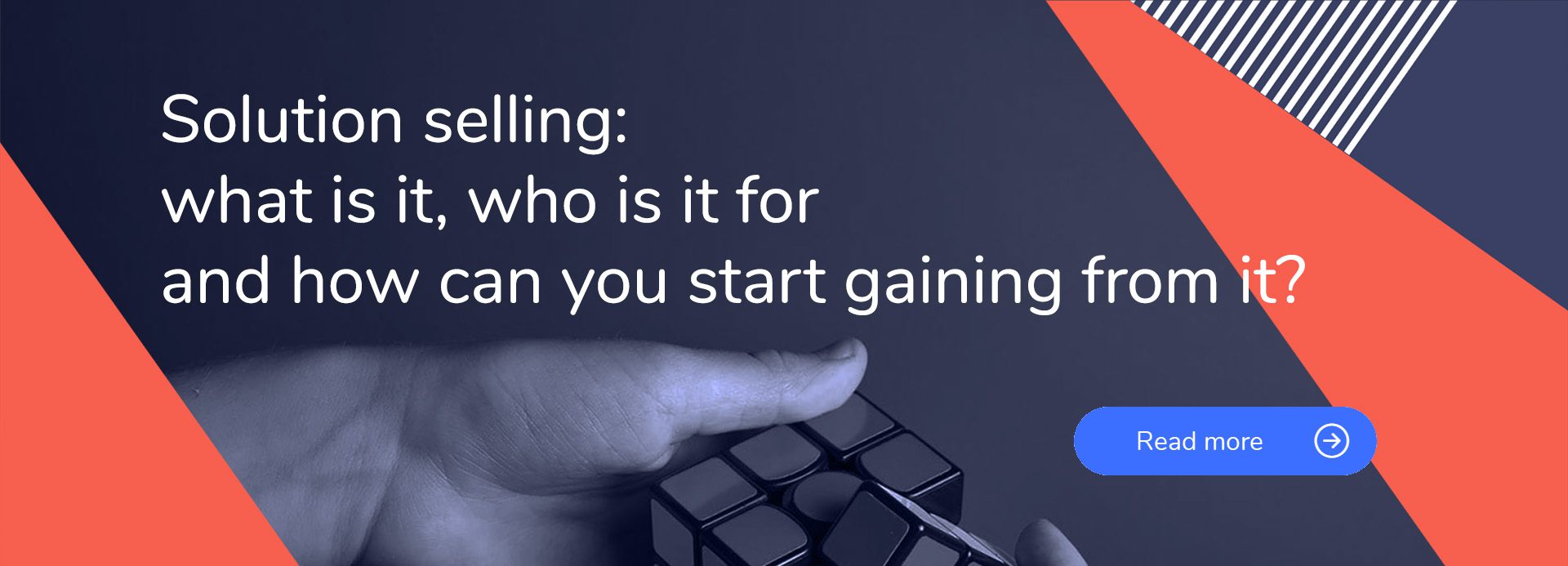Problem selling: How to sell the problem before the solution

How to identify a customer pain point, make them aware of the issue, and effectively sell the solution.
What came first, the chicken or the egg? There are lots of different methodologies out there when it comes to selling, but let’s bring it right back to the beginning…
Before you can sell something, there needs to be a want or need for it – a problem that needs to be solved. Sometimes this problem might not be obvious, people might not even notice it, so you need to be prepared to tell people about that problem. This is where the idea of “problem selling” (as we’ve coined it!) is born.
The idea of starting with what a customer might be lacking is often accredited to Steve Jobs – his philosophy of starting with the customer experience and then working backward to the technology (in other words, working out what customers might want and creating that rather than selling a product to a customer).
But problem selling takes it one step further and looks at building awareness around a gap in the market and saying, “Hey, look, we actually have the product or service that fills that gap”.
First off, what is solution selling?
Solution selling is a sales approach that focuses on a customer’s pain points and sells them a solution to those problems. The goal is to build trust with the customer and help them achieve their sales objectives to keep them coming back time and time again.
If you’re in sales or marketing, you’ve probably heard of solution selling. It’s a common methodology of selling and is often adopted in the B2B market.
What is problem selling?
Problem selling, or more commonly known as problem-centric selling, is the art of pinpointing a customer’s need or problem before they’ve even become aware of it and building awareness around that problem. Your product or service will be the solution to this problem.
Essentially, you are selling the problem you solve. In other words, you need your customers to believe in this problem (you’ve drawn to their attention) enough to then buy your product or service.
It differs from solution selling because you’re not selling a solution; you’re “selling” a problem.
How do you sell the problem you solve?
Most people just accept the status quo – if things are ticking along okay, then they’re probably not going to challenge the norm. But that doesn’t mean things can’t be improved.
Think of it like this: Imagine there’s a bus service from the suburbs into the city that runs every 30 minutes. A lot of people use this service to get to work. You want to run your own bus service that will offer buses every five minutes but costs a little bit more. Ultimately, you need to convince people to use your service, but how?
You need to create awareness amongst the people using the 30-minute service that there’s a problem with having buses only every half an hour. Start by talking to the people using the service about the pain points they suffer from it: working around that schedule could mean getting less sleep, arriving to work too early or too late, and basically wasted time. Now, you can use that information to reach more and more people to highlight this problem.
Once you’ve done this, you can swoop in with your proposed solution. People will be willing to pay a bit more because it’ll solve all these other issues for them.
This is how you sell a problem.
The customers just do nothing phenomenon
There’s another reason why you might want to consider this type of sales methodology. The customers just do nothing phenomenon. According to CSO Insights, for many sales businesses, more sales are lost to “No Decision” than to a competitor. But what does that mean?
Sometimes customers or clients are more likely to ignore an issue or brush it under the carpet if it’s not an urgent fix. In situations like this, it’s important that you have the toolkit to highlight why it is an urgent fix and how you can fix it.
Problem selling techniques
In 2021, Forbes spoke to members of the Forbes Business Development Council to determine the best problem-centric selling techniques – we’ve narrowed down what we think are the most important elements to master a problem selling sales approach.
- Researching your client and the market
It’s the old age adage: research. There’s never a better start to any kind of sales strategy than researching your clients and what’s currently on the market.
Selling for customer outcome and having knowledge and key insights into the customer’s business are critical elements of a problem-centric selling approach. Prioritising value drivers, aligning key business insights to customer priorities and connecting them back to the strength of the solution and services offered can help in gaining the customer’s confidence.
At Sopro, we know that’s vital to understand your market and hone down your target audience. Our market mapper can help you to better understand who you should be targeting.
- Having an open dialogue
Active listening, empathy, and using authentic emotions are all part of an open and effective dialogue – and having an open and honest conversation with your prospective clients is the first step to successful problem selling.
Building a rapport with your prospects opens up new sales opportunities as they’ll be more likely to listen to you when you say, “Isn’t this an issue? We could fix it for you”.
- Use customer-centric selling
A customer-centric approach simply means putting the customer first. Instead of a focus on selling, your focus would be on creating an invaluable customer service experience. You could also look at this as relationship selling, where building a relationship and rapport with your customers come first.
Problem-centric selling places customer needs at the heart of sales and doesn’t end at selling a product or service. It’s also equally important to be mindful of how well a proposed solution fits into a customer’s existing habits and routines or if it requires substantial changes to customer behaviours, so as to minimize any barriers to adoption post-sales.
- Show your value (and why you’re better than your competitors!)
This is always essential – people need to know why you’re the best! To compete in a crowded market, you must provide value that is easily understood by the buyer. Problem-centric selling involves helping the buyer understand their challenges and offering a tailored solution that delivers benefits for their business.
A simple overview…
- Identify the problem or pain point that you can solve using extensive research
- Build a relationship with your prospects so they feel like they can trust you
- Approach them using a customer-centric sales method
- Demonstrate your worth and why you’re the best on the market for them and their business
Selling a problem requires a different approach than traditional product-focused selling. By identifying and empathising with the customer’s pain points, offering a customised solution, and demonstrating the tangible value of your offering, you can position yourself as a trusted partner and achieve greater success in B2B sales.
At Sopro, we can help you reach your specified audience and generate leads, no matter your sales approach. As a B2B sales engagement platform, we can hone down your target audience and reach out to them using personalised, tailored messaging that should resonate with them.
Book a demo to find out more.







Share